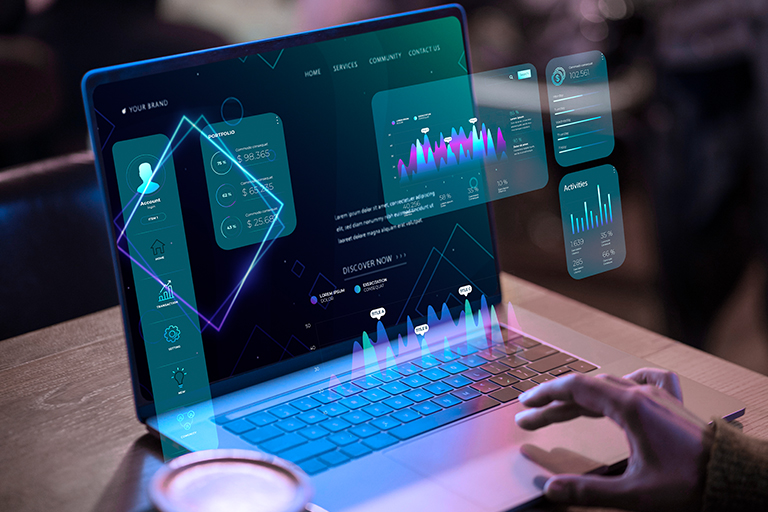TechServe members are rapidly adopting AI to solve real business challenges. In a recent showcase, four leaders shared in-depth details on how specific tools are streamlining operations, enhancing recruiting, and creating measurable impact across their organizations. Below are deeper highlights from each presenter, reflecting not just what they use, but how they use it and the lessons learned along the way.
This is the first showcase in the AI in Action series. You can read the highlights of the second showcase here.
Apollo.io: Streamlining Prospecting and Outreach
Tyson Franco, President – SAP & AI/ML Practice Lead at Mako Professionals, demonstrated how Apollo.io consolidated multiple tools into a single platform, cutting costs while improving results.
“When we discovered Apollo, it rolled up a lot of our tools,” Tyson explained. His team had been spending over $600 a month across different B2B databases and scheduling apps. Apollo combined CRM, dialer, calendar integration, and data enrichment in one place.
He detailed a use case where his team prepared for a major technology conference. They pulled contact names, job titles, company names, and speaker session topics from the conference site. Using Apollo’s “Research with AI” feature, they built prompts that automatically generated personalized outreach messages referencing each speaker’s session content.
“One speaker might be talking about generative AI in SAP, another about HANA Cloud,” Tyson said. “The AI used that session description and company details to build a custom message. It felt personal, not like a blast email.”
The results spoke for themselves: a 47% open rate and a meaningful uptick in replies. “Industry average is maybe 20–30% open. If you get one or two replies, that’s great. Five would be phenomenal,” Tyson said. “It only takes one meeting to make a huge impact.”
Apollo also integrates with meeting recordings, which Tyson’s team uses to bridge gaps between sales and recruiting. “You can prompt it after a client call: ‘What was the job description from this meeting?’ It will summarize and even draft a description for the recruiters. Salespeople no longer miss details while they’re listening.”
Noon AI: Smarter Sourcing and Screening
Zach Ledoux, Senior Technical Recruiter at RedStream Technology, highlighted how Noon AI has changed the way his team sources and screens candidates.
“The biggest piece that sold us on Noon was their acknowledgement for fake candidates,” Zach said. Noon flags suspicious profiles—those with inconsistent work history or recently created profiles—before recruiters waste time.
Zach walked through their workflow: recruiters upload a job description, set parameters such as years of experience, location radius, and required skills. Noon then begins sourcing across LinkedIn, Dice, and other platforms. “You can train Noon as you go,” Zach explained. “If a candidate is too far away, you reject them and tell Noon why. It recalculates immediately.”
He also noted that outreach is built in. “It starts with a LinkedIn message. If they don’t reply, Noon automatically follows up with an email if it finds one. You can set how many follow-ups and when they go out.”
Currently, RedStream is working on integrating Noon with their ATS, Tracker RMS. “That’s the biggest hurdle—making sure we can tap into our own candidate database. But even now, we’re seeing more interviews booked and better candidate quality.”
Zoom Custom AI: Consolidating Tools and Enhancing Efficiency
Pete Newsome, President at 4 Corner Resources, shared how his team adopted Zoom’s custom AI companion to simplify daily operations and reduce costs.
“We wanted to operate with fewer screens and apps,” Pete said. By switching to Zoom’s AI-enhanced platform, they replaced their phone system, Slack, and scheduling tools—while gaining an integrated knowledge base.
One standout feature is its ability to capture and organize meeting data. Pete showed how recruiters use custom templates for intake calls, reference checks, and candidate profiles. “After a conversation, the AI automatically populates those fields. Recruiters can focus on the dialogue instead of frantic note-taking.”
Zoom’s knowledge base feature impressed him as well. “We can upload client contracts and policies. Recruiters can ask, ‘What are the payment terms for Client X?’ and get an instant answer.”
“For about $35 per seat, we consolidated multiple systems,” Pete said. “That cost savings wasn’t even the primary goal—but it’s significant.”
A Custom AI Workflow: Prototyping for Recruiting Success
Ian Petersen, Partner & Project Director at NewCombin, described building a tailored AI workflow using a large language model (LLM) wrapper.
“We took a tinkering approach,” Ian explained. “We prototyped with ChatGPT to learn what we actually needed, then built a wrapper that structures the data our recruiters use.”
The system ingests job descriptions, generates technical questions, and helps recruiters assess candidates consistently. After interviews, transcripts and notes are uploaded, and the system outputs summaries categorized as green, yellow, or red flags.
“Different interviewers have different styles,” Ian said. “We needed consistency. Now every interview produces the same structured summary. It also compares candidates side-by-side and even factors in cost considerations.”
Early results are promising: “Just out of Q1, we saw a 15% productivity increase in recruiting,” Ian reported. “It allowed us to spend less time managing information and more time making decisions.”
TechServe members are finding that AI isn’t just hype—it’s driving tangible improvements in productivity, accuracy, and cost savings. From Tyson Franco’s Apollo-driven outreach to Zach Ledoux’s AI sourcing, Pete Newsome’s integrated Zoom workflow, and Ian Petersen’s custom-built solution, these use cases show how thoughtful implementation delivers real-world results.
TechServe members can view the original showcase here and the second showcase in the series here.
If you have an AI tool you’d like to showcase, or a tool you’d like to learn more about in a future session, we’d love to hear from you – please email [email protected].












